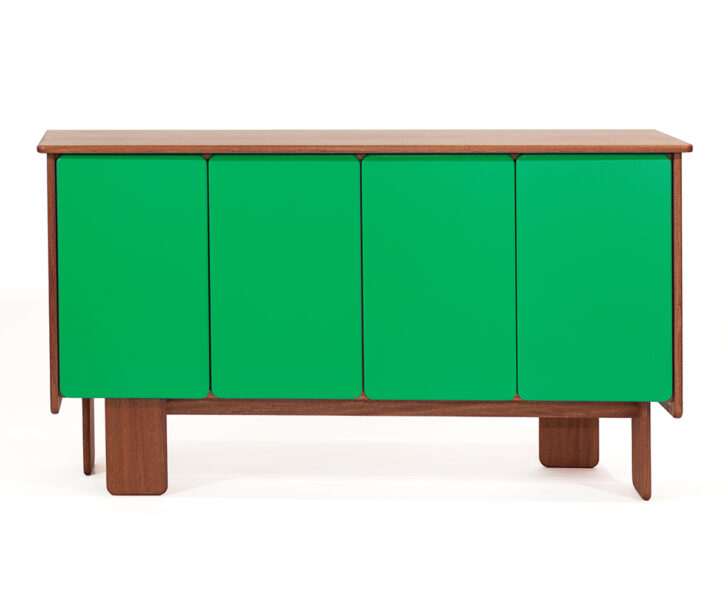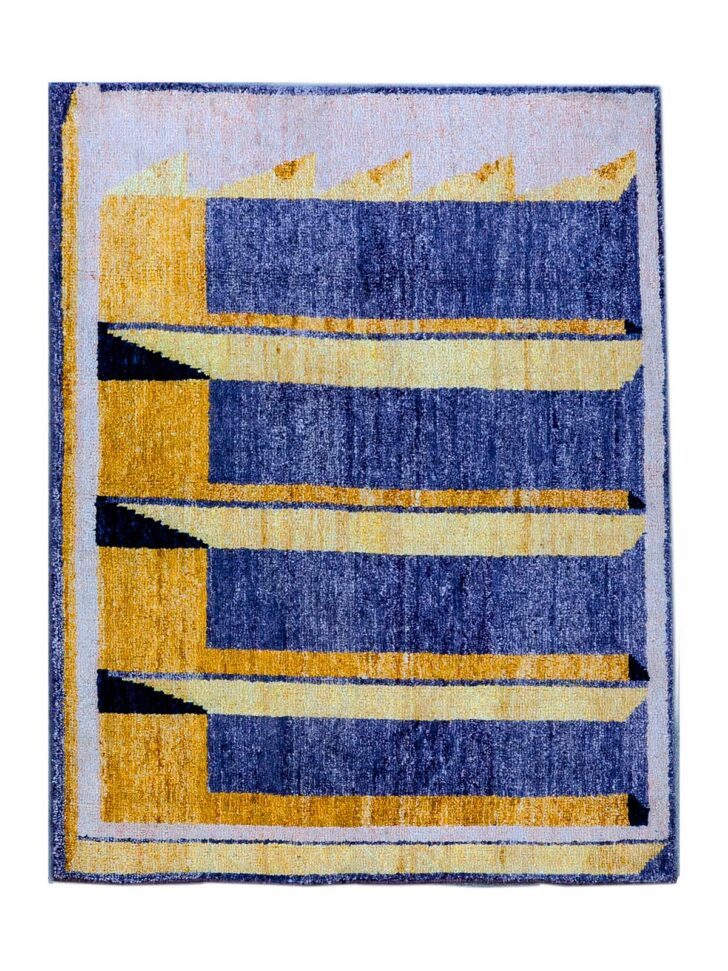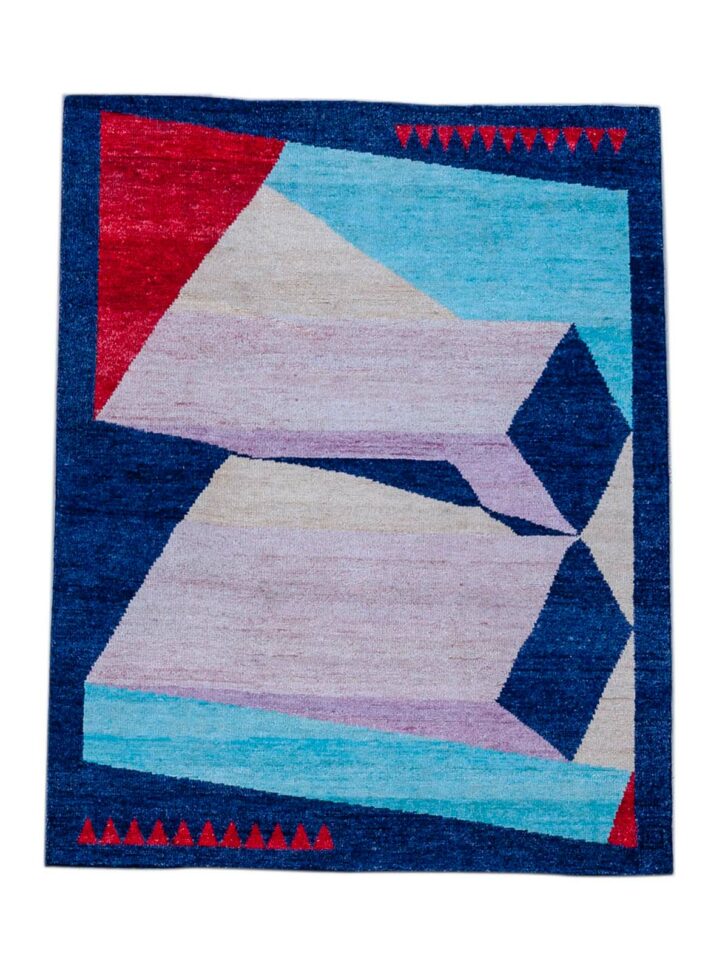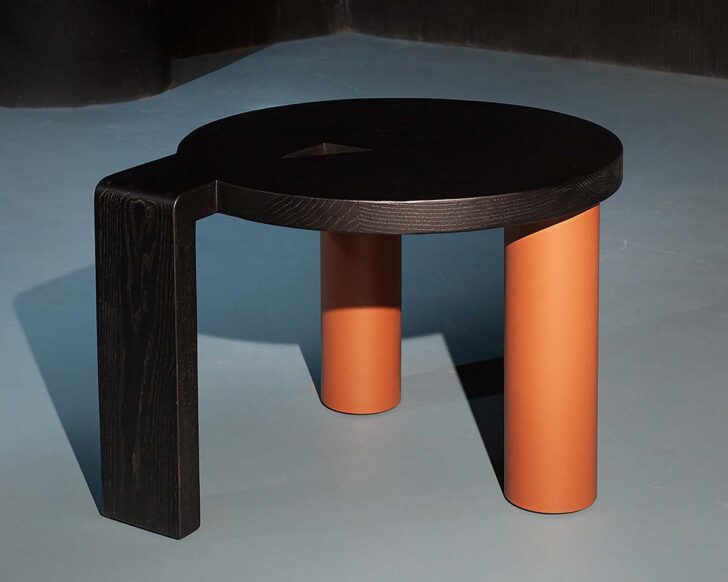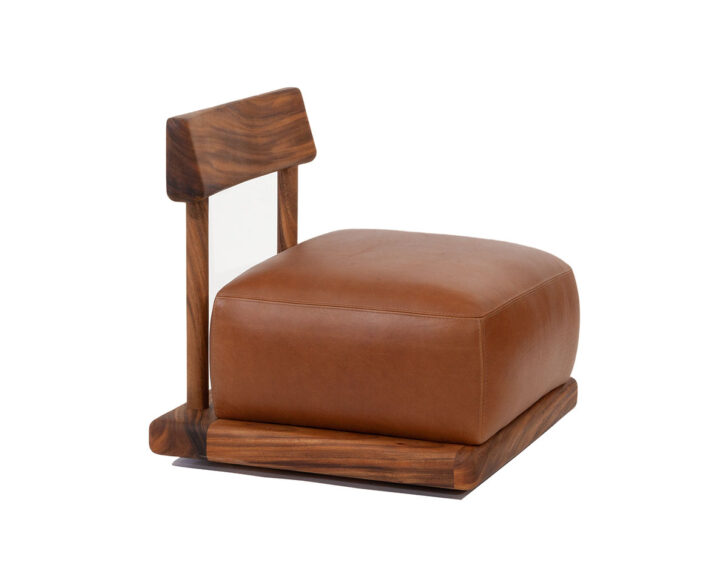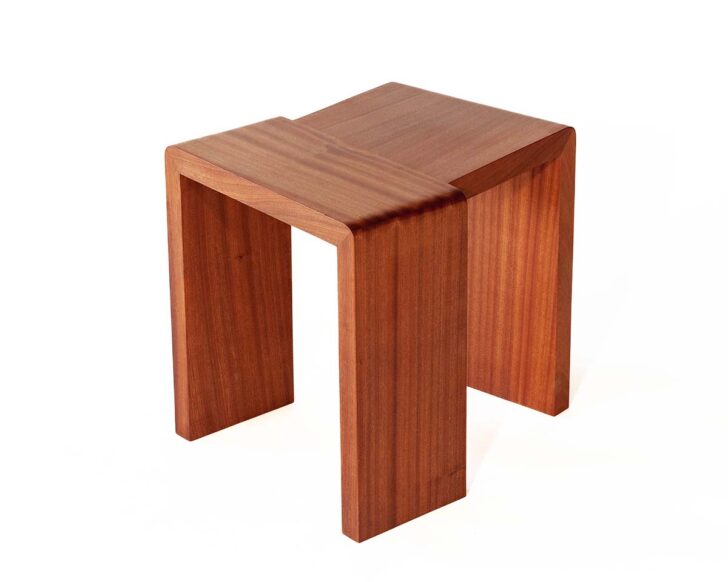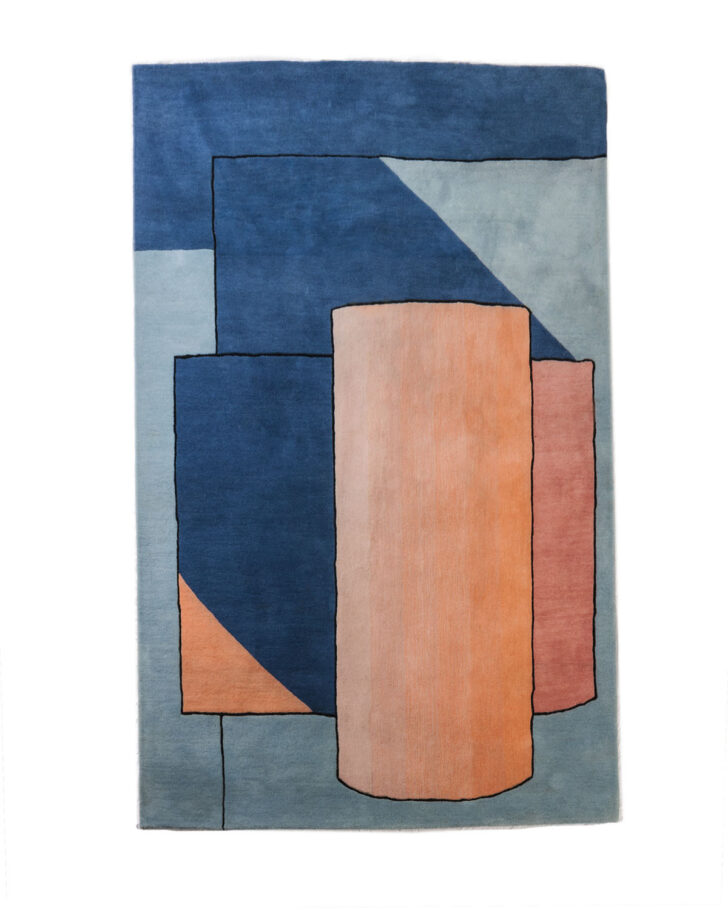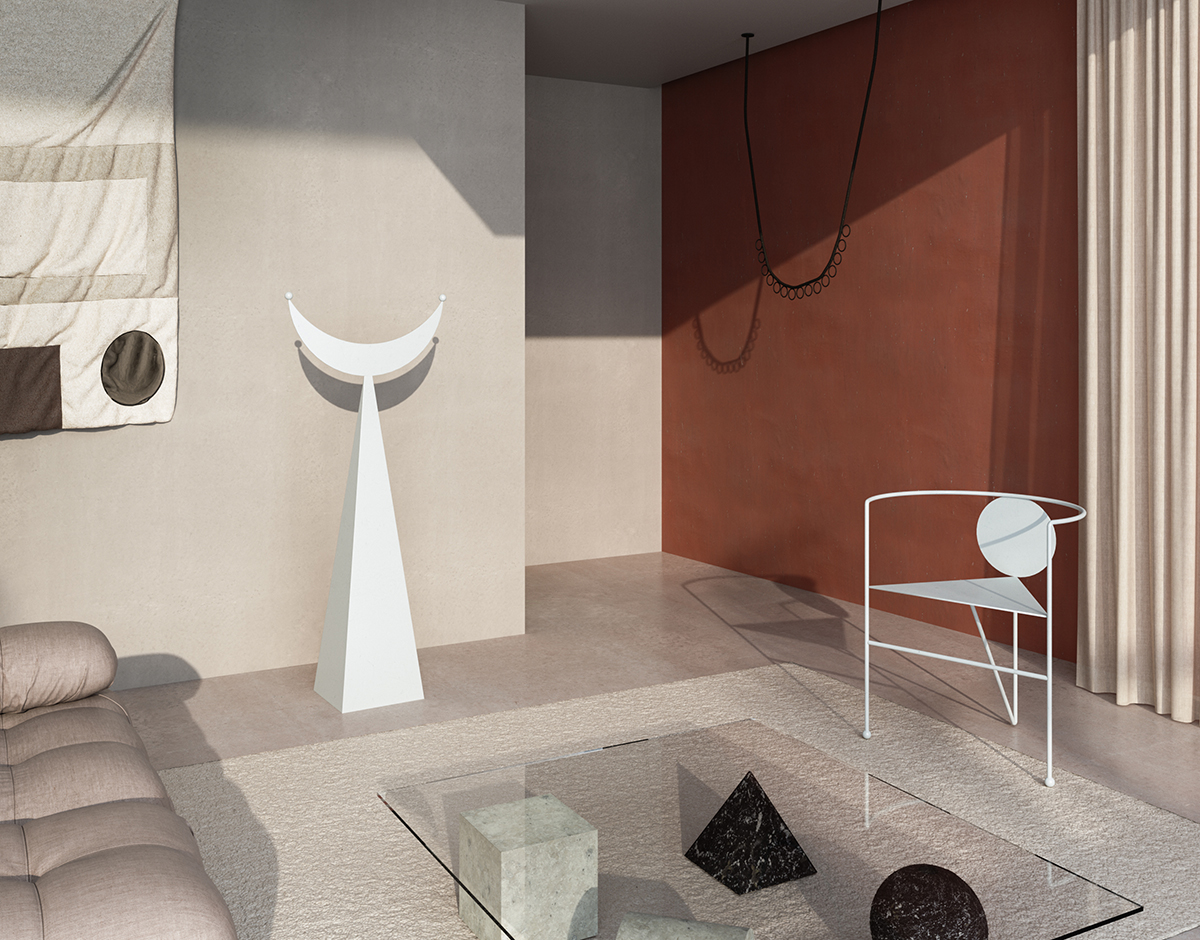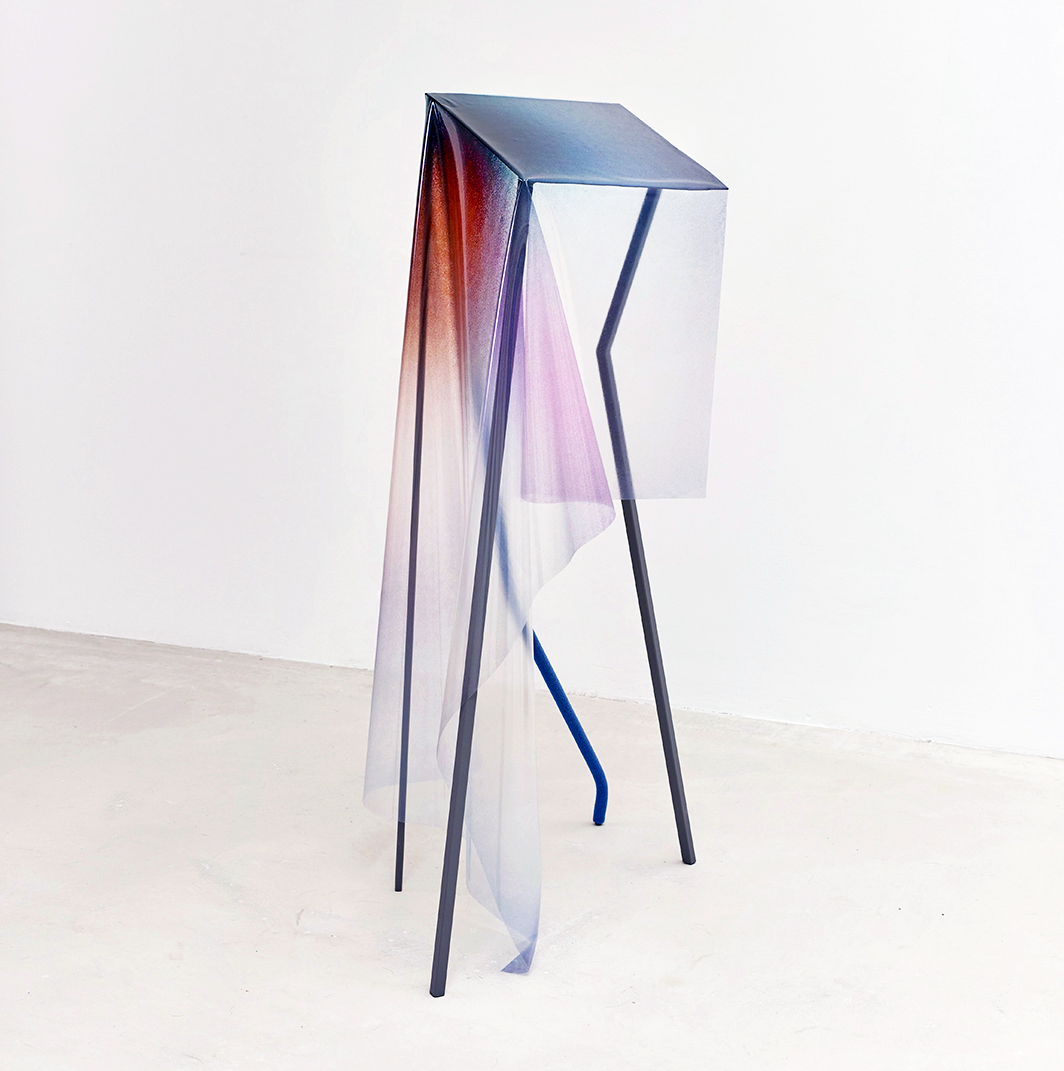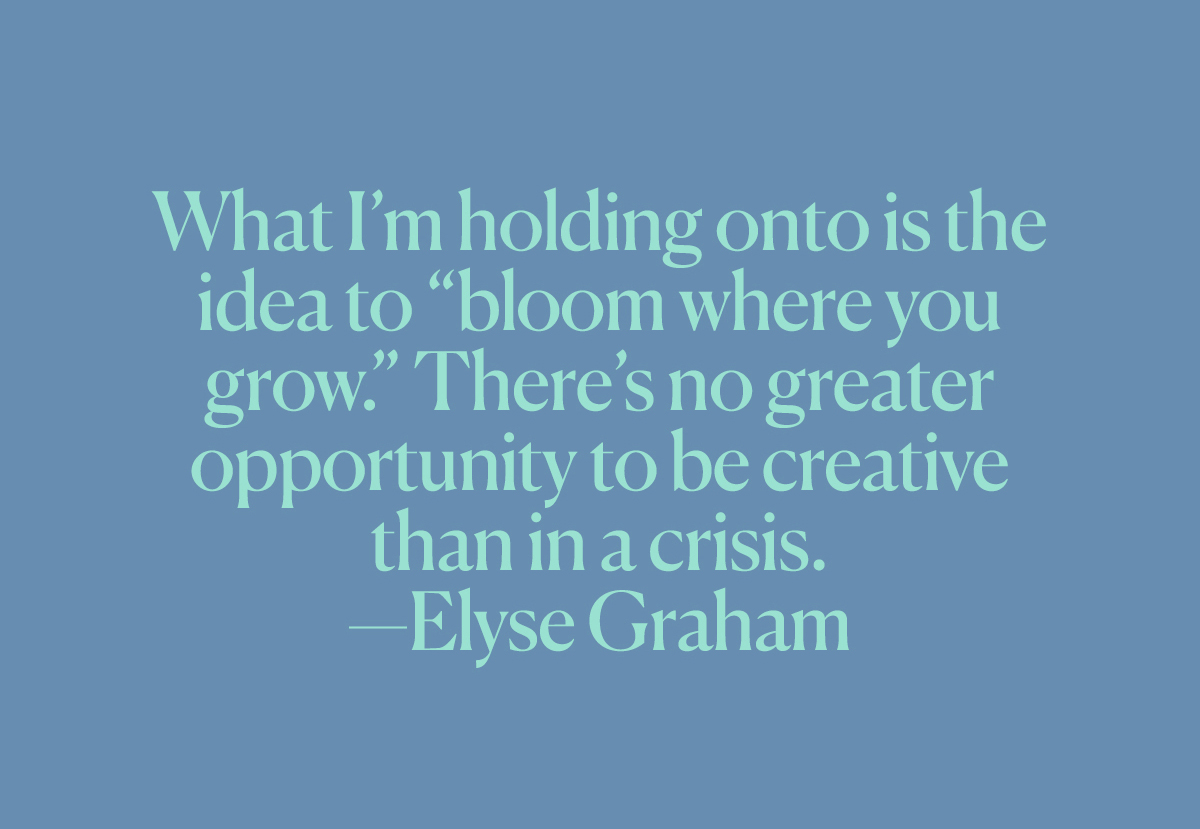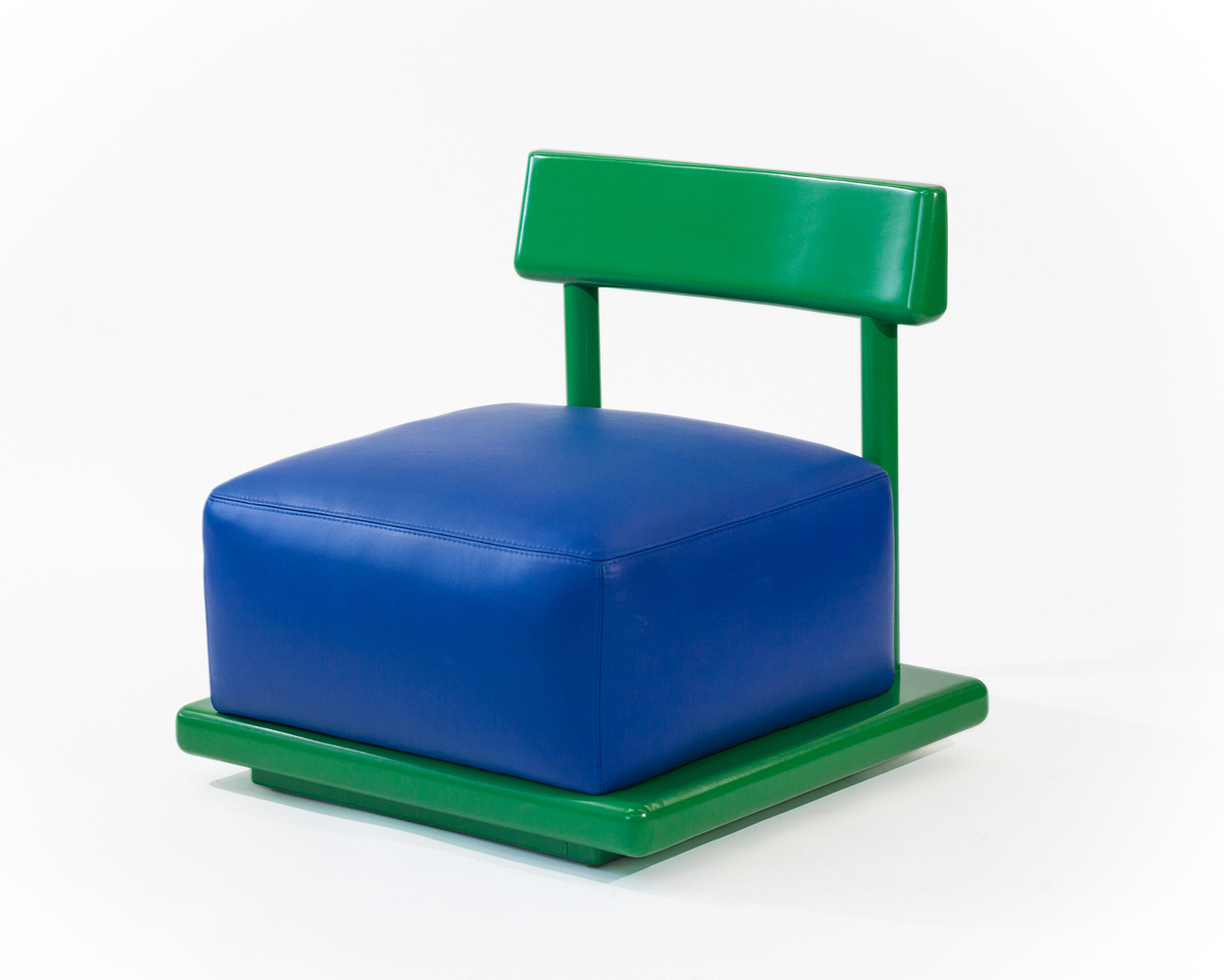
American Design Hot List 2022
Taidgh O’Neill
Los Angeles, taidghoneilldesign.com
O’Neill spent time working in construction, carpentry, and historic restoration before turning to furniture design a decade ago. (Fun fact: O’Neill designed a jaunty wooden chandelier for our 2012 Hotel California show!) In the years since, he’s shown his geometric works in wood with galleries like JF Chen and had them licensed by companies like Classicon, but his new work represents a departure into more … well, actually just more. More color, bigger proportions, a looser feel — we once referred to the chair at the top of this post as a Postmodern Pee-Wee chair. He’s also been growing his collection of rugs, which begin by rendering an architectural structure in 3D, casting simulated sunlight onto the structure to produce shadows, and then flattening the whole thing into a two-dimensional product.
What is American design to you, and what excites you about it?
I believe that a difference in mode of production from other world regions creates distinction in American design. In other continents, there exist countless design houses that license and produce contemporary design fitting with their visual arc. There are very few equivalents to this in the US. Instead, designers must take on the responsibility of producing their vision. As a result of this lack of consolidation and curation, there exists such a wide range of design forms and materials. It can be burdensome for individuals to simultaneously visualize, execute, and distribute their objects, but the results are fantastical. The US has, of course, a world reputation of being hyper-individualistic, so it ought to come as no surprise that the designs to emerge would be bold, exuding clear and unique authorship from individuals. In many instances around the world, one can look at a design and have a strong sense of the region in which it is generated. I believe that isn’t as true in the US because of this eclecticism.
What are your plans and highlights for the upcoming year?
For the last couple of years, I’ve been mindful of designing textiles, lighting, and furniture that would fit into our 1965 post-and-beam home in the El Sereno neighborhood of Los Angeles. I’m looking forward to wrapping up that slow-moving renovation. Other than that — continuing to carve out time and resources to keep making one-of-a-kind studio pieces. I have a few designs licensed by European manufacturers but I honestly get a lot more satisfaction from building unique commissions for local collectors.
What inspires or informs your work in general?
I have several groupings or series of works inspired by different things. My early work was very angular, hard-lined and chaotic. These works were inspired by ad-hoc construction practices I observed during my days as a Los Angeles contractor. I started bulking things up and rounding edges, inspired by utilitarian infrastructure such as overpasses and concrete-enclosed waterways. Presently I’m working on a series of tables that, though it’s probably difficult to discern, are inspired by Mayan hieroglyphs: Proportions are generous, the movement is dynamic and each composition keeps the eye moving. They’re gestural and expressive but have a consistent formal vocabulary.
